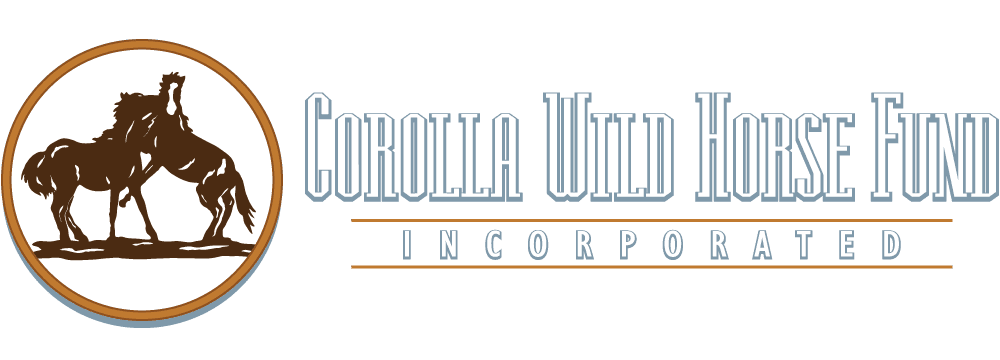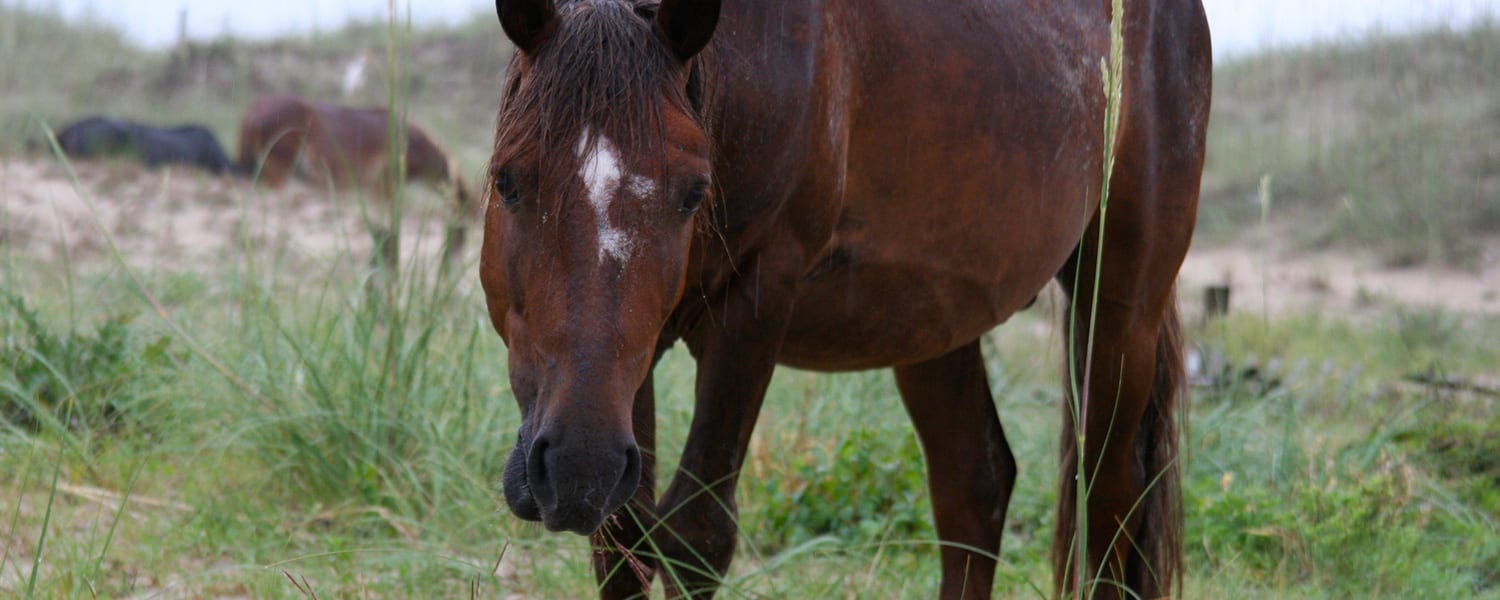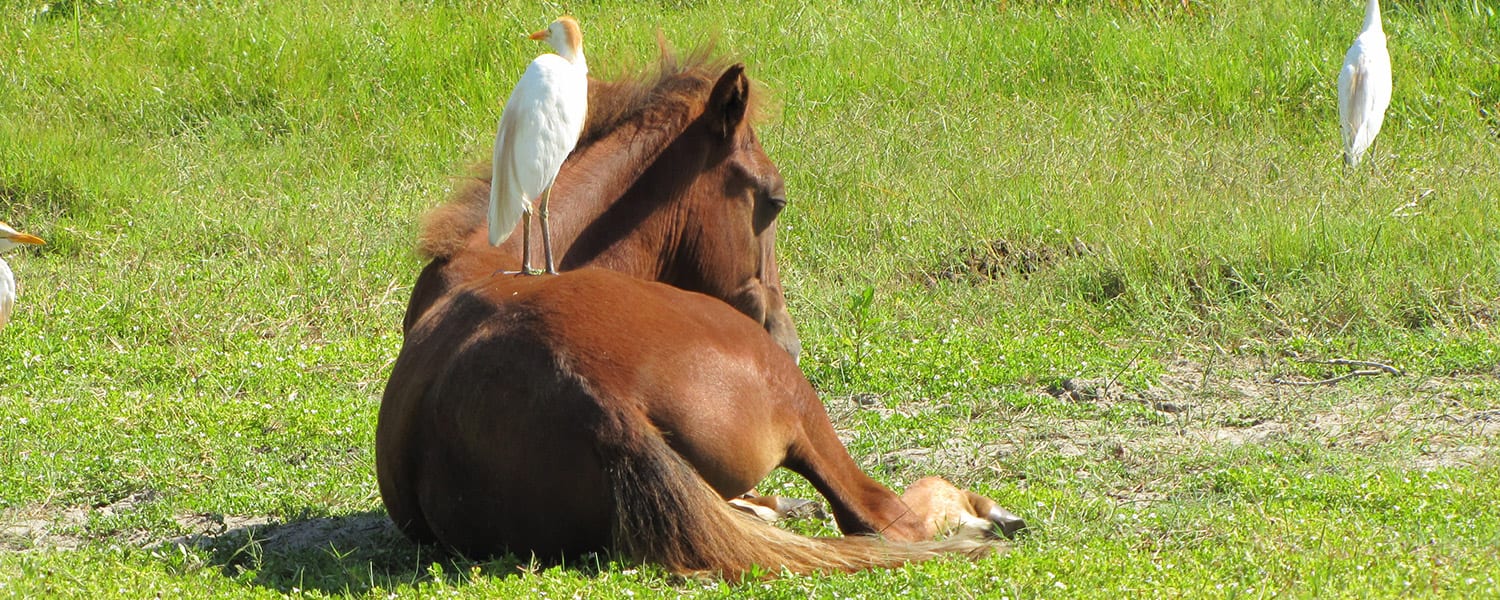A: If you can safely take a picture of the horse (remaining at least 50 feet away at all times) please do so. Then call the Fund at 252-453-8002 or, if after hours, call Currituck County Dispatch at 252-453-3633. Never try to “help” a wild horse yourself. Sick, injured, wild animals are even more unpredictable and dangerous than healthy wild animals and you could be seriously injured. You could also risk further stressing/injuring the horse.
A: Mile markers are the most helpful bit of information. Are you near a house? The first two digits of the house number are the mile. So if you’re near a house with the address of 1923 Sandpiper Road, you’re on Sandpiper at mile marker 19. Landmarks like the fire station, the park, or a brightly colored house can also be helpful.
A: Currituck County sheriff’s dispatch can be reached at 252-453-3633. Please be ready to give a location as well as a description of the offenders and their vehicles, including license plate numbers if possible.
A: No. There is a county ordinance that makes it illegal for people to come within 50 feet of the horses, regardless of the person’s experience, knowledge, or familiarity. Wild horses are inherently different from domestic horses and even the most experienced horsemen have quite a learning curve to overcome when understanding wild horse behavior. The horses may seem docile and friendly, but they are wild and will always be unpredictable and potentially dangerous.
A: It is illegal to feed the wild horses. Their highly specialized diet only includes native plants and grasses with no supplemental feeding provided by the Fund or any other organization. Over the years several horses have died as a result of being fed by humans. One young horse died after eating watermelon rind that had been tossed out into a yard. Even food that domestic horses can usually tolerate, like apples and carrots, can be harmful to the wild horses. If the horses become accustomed to taking food from humans, chances are high that they’d have to be removed from the wild.
A: Welcome to the northern Outer Banks! This is a part of life here and the horses will eventually move on. Please remember that the 50 foot ordinance remains in effect at all times, regardless of where the horses are located. It is your responsibility to maintain the distance to the best of your ability.
A: It is your responsibility to stay at least 50 feet away from the horses at all times. This includes situations where the horses approach you. Please do your best to move away from the horses and remember that in the summer when the horses come down to the beach it is in an attempt to get away from the heat and the biting insects. Respect their space and give them some breathing room!
A: The simple answer is – go native! Native plants are always the best choice for our fragile environment. The North Carolina Native Plant Society has a wonderful resource for this: https://ncwildflower.org/recommended-native-species/. If you’d like to go a step further and make sure that your yard is horse-friendly, here is a list of native plants you might find in our area that are dangerous to horses: https://onslow.ces.ncsu.edu/2018/05/plants-weeds-toxic-to-horses/. One thing to always avoid – oleander. There is oleander all over the Outer Banks, but it is not native and it is highly toxic to both animals and people. As for grass, you can’t go wrong with a local pasture mix. Read more



